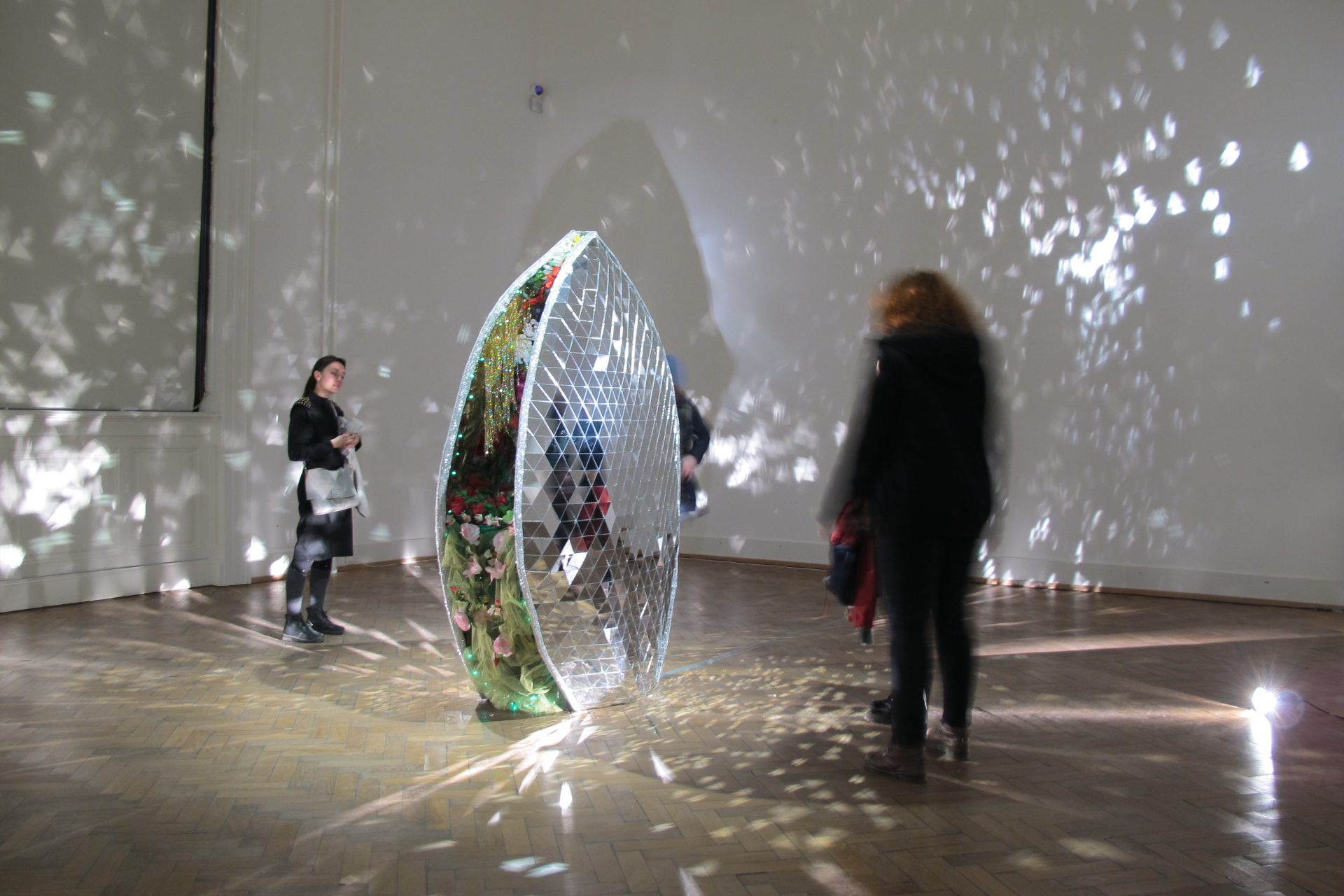Hedjleh
Materials: metal, Pappmaché , acrylic mirror, LED light, plastic flowers. Object size: 220x135x120 Sound: Self-recorded sounds and songs from different locations in Iran (10 minutes). 2017
Hedjleh
Materials: metal, Pappmaché , acrylic mirror, LED light, plastic flowers. Object size: 220x135x120 Sound: Self-recorded sounds and songs from different locations in Iran (10 minutes). 2017
Photos: ©Akbild
Hedjleh
Materials: metal, Pappmaché , acrylic mirror, LED light, plastic flowers. Object size: 220x135x120 Sound: Self-recorded sounds and songs from different locations in Iran (10 minutes). 2017
Photos: ©Akbild
Hedjleh
Materials: metal, Pappmaché , acrylic mirror, LED light, plastic flowers. Object size: 220x135x120 Sound: Self-recorded sounds and songs from different locations in Iran (10 minutes). 2017
HEDJLEH
In Iran there are two objects which share the name “Hedjleh”. One is the wedding bed that the bride and groom spend their first night in, and the other one is a memorial to the unexperienced joy of young men who have passed away before having the chance to marry. In this installation I have taken elements from both original objects and combined and reinterpreted them in order to create my own Hedjleh.In 2016 whilst researching the topic of the Hedjleh wedding bed, I came across an object with the same name but which was instead used in mourning ceremonies. In this case the Hedjleh is an object or monument that is erected in a public space in memory of young, deceased men who had not yet had their wedding night.
I began by examining the Hedjleh form and its corresponding symbolism. As there is no written material to be found, I decided to conduct my own interviews with local people in various parts of the country in order to reflect the diverse regional uses and practices relating to Hedjleh in Iran. Through research, I found out about a ceremony which takes place every year in central Iran – a giant piece of wood in the form of a cedar tree is processed through the city, commemorating the death of the third Shia Imam Hussein.
Representations of the cedar tree are prolific in Iranian miniature painting, and the distinctive shape of the tree is a fundamental element of islamic architecture. In addition, the cedar is the tree of the prophet Zoroaster, who is said to have brought the sacred tree from paradise to earth and is said to have planted with his own hands one of the two paradise trees in “Kashmar” and the other in “Tous”. At Zoroastrian ceremonies, objects in the form of cedar trees are a recurring theme.
For my installation it was important to combine the different elements of these two quite distinct Hedjleh monuments. By adopting the mosaic mirrored appearance of the mourning Hedjleh, I am forcing the viewer to confront their own broken reflection and ultimately, their own transience. From the wedding Hedjleh I retained the decorative elements; the two-part form representing the female sexual organ, which stands for birth and life or the next world. The light inside is green – a sacred colour in Islam symbolizing spring, freedom, and silence.
In many Islamic countries, a wedding is one of the most important steps in life because it represents the blossoming of love and the beginning of intimacy between the married couple. The relationship between the two forms of Hedjleh is clear: whereas the wedding Hedjleh celebrates the start of a couple’s sexual life, the mourning Hedjleh is a monument to a young man who was denied these pleasures. Since this so-called Hejleh is only set up for young men, my installation should above all criticize this gender separation. That’s why I deliberately chose to play with the female form and its representations in my installation.
This Installation is my interpretation of the cedar tree which also reminds us of the female sex organ and rebirth. I want to invite the viewer to look inside the vagina and observe the faces of the young fighters who have who sacrificed their lives for justice and a better world during the last 2 months of the woman’s revolution in Iran. The viewer will also be confronted with their own broken reflection in the fragmented mirrored surface of the Hedjleh – the wounded broken pieces of you, subjected to the injustice and oppression of the patriarchal state.
Materials: metal, Papiermaché, acrylic mirror, LED light, plastic flowers. Object size: 220x135x120 Sound: Self-recorded sounds and songs from different places from Iran (10min).




